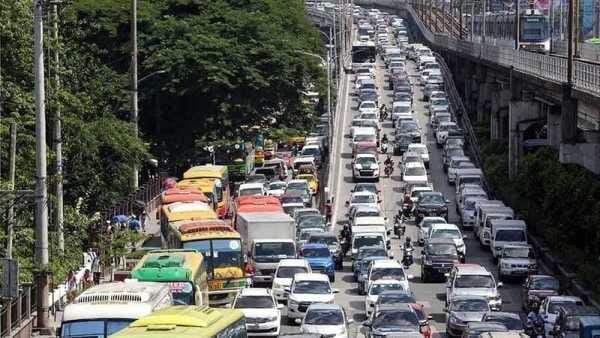Why EDSA traffic can never be solved
Table of Contents
EDSA traffic can never be solved just as Bangkok’s traffic can never be solved — because its design does not match its current use.

Bangkok is an example of a city with a wrong design.
It has the worst traffic because its roads are arbitrary and traces the canals which were used to demarcate private property. Such property was not designed to maximize the flow of transportation.
The most efficient system is the grid system which New York has, wherein the streets are planned ahead of time.
Roundabouts and circumferential roads are inefficient because they funnel or confine traffic flow into one place. This is common in European cities like Paris where some king makes a statue of himself and routes all the traffic towards that statue.
Singapore used to have roundabouts until they studied road efficiency and came up with the same conclusion that the Americans had. So they removed their roundabouts. Similarly, the Metro Manila Development Authority removed the roundabouts at EDSA.
The Design of EDSA
EDSA is a circumferential road that wraps around the areas next to old Manila (Intramuros). It means that EDSA is the end of Manila, and the population should not extend beyond that. Any new population center outside of EDSA would need its own design and road system to connect and match with that of Manila.
This is what Manuel Quezon and the American planner Harry Frost had in mind when they created Quezon City .
Instead of new population centers popping up beside EDSA like Ayala and Mandaluyong, they would be focused in Batasan Hills and the Quezon triangle in Quezon city, away from EDSA. The large Quezon Ave would then connect the two centers as:
- Intramuros
- The Quezon triangle
Grids would then be set between the circumferential roads of EDSA, C5, etc.
JICA’s original transport plan was faithful to this original design. Unfortunately, it was overturned by President Ferdinand Marcos and replaced with his Metro Manila Transport, Land Use and Development Planning Project MMETROPLAN, funded by the World Bank.
The biggest unnatural culprit is Ayala Avenue which was meant to be low density residential, as proven by Legaspi Village. Instead, Ayala became a high-density population center without a supporting high density road system.
The same is true with Taguig which was just a hilly area containing an army base as Fort Bonifacio.
Thanks to the Ayala business district and Bonifacio Global City in Taguig, EDSA traffic became unsolvable.
- The winners are the real estate developers of those two areas.
- The losers are the people who actually have to go there for residence or work.
Is There a Solution?
The best solution is to create a new city elsewhere with a better design. This is because overhauling its current design would be too expensive.
The government’s solution seems to be New Clark City, which is located far in the North. The only problem is that it is located near an active volcano!
We can divide the solutions into the following:
Specific Policy Solutions
- Nationalize public transport. This is similar to:
- the Love Bus of Ferdinand Marcos
- the public bus companies of other countries
- Nationalize food logistics. This is similar to:
- Food Terminal Inc of Ferdinand Marcos
- Vinafood of Vietnam and Sinograin of China
- Spread development to the smaller cities by improving internet connection and roads going to and from them
- Raise property taxes in congested urban areas to drive away people
- Lower property taxes in sparsely populated areas to attract people
General Policy Solutions
- Population control to reduce population growth
- Adopt a leasehold policy to make right of way issues easier to resolve
- Focus on rail infrastructure instead of roads
- teach Filipinos about math and logic so that Filipinos can plan their own cities instead of relying on foreigners who will suggest solutions that favor their own countries.
- Some foreign consultants like the World bank would advocate highways since their investor-countries have a lot of car and bus makers (such as those making the Bus Rapid Transit).
- Some consultants like JICA advocate railways since Japan exports trains. They get profits from the sales of those cars, buses, and trains while the recipient country is saddled with debt without a real solution.
- A local consultant might suggested other policies such as cable-cars or river boats
General Solution
- Counteract liberalism and libertarianism that prompts people to purchase whatever land they want and develop it however they want